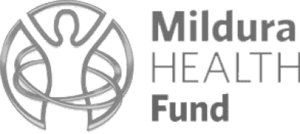Services
X-Rays & Imaging
At Oak Tree Ballarat Dental, we strive to provide all our patients with tailored and individual care. Access to the most recent x-ray technology aids us in our ability to reach appropriate diagnoses and formulate the best treatment plan suited to your needs. They help our dentists to see parts of your teeth and jaws that cannot be seen from a visual examination. At our practice, we are fortunate enough to have several types of different x-ray facilities, each type providing different information to your dentist.
These include:
-
Digital Intra-Oral X-rays: These are simple x-rays that are taken while you are seated in the dental chair with the simple push of a button.
-
OPG: These are full mouth scans taken in our x-ray room, often useful for identification of wisdom teeth, scanning for any bony abnormalities, and checking for development of teeth in your child.
-
Cone Beam CT: This technology produces instant high-quality 3D images of a specific region in your mouth to create a virtual simulation of your anatomy.
X-rays can be used to:
-
Detect and monitor early signs of decay
-
Detect and monitor the depth of decay to understand appropriate treatment options
-
Detection and monitoring of gum disease (periodontitis)
-
Monitoring and treatment planning of wisdom teeth
-
Planning for orthodontic treatment
-
Planning for dental implants
-
Detect bone lesions, diseases, oral cancer, or other abnormalities
Is it safe to have x-rays?
We often get asked about harmful radiation with dental radiographs. While it is true that dental x-rays contain radiation, we practice the ALARA principle. ALARA is an acronym for As Low As Reasonably Achievable. This is a radiation safety principle for minimising radiation doses and releases of radioactive materials by employing all reasonable methods. ALARA is not only a sound safety principle, but is a regulatory requirement for all radiation safety programs. This is achieved in the following ways:
-
Clinicians are competent in taking excellent radiographs to prevent the need for unnecessarily retaking scans
-
Digital x-ray is used to minimise radiation dose
-
If recent x-rays are available at other dental surgeries, where appropriate and possible we seek out copies to minimise extra x-rays
-
We use the fastest radiographic film consistent with providing the diagnostic information sought (‘E’ speed or greater) to ensure the least possible radiation dose to our patients
-
We use rectangular collimation to significantly reduce radiation doses
-
Our dentists wear radiation monitoring devices to ensure the exposure of scatter radiation is negligible
-
Our x-ray room has been built with lead-lined walls, door and glass viewing panel for the safety of our patients and staff
-
We are able to offer intra oral radiography, OPG (full mouth x-rays) and 3D scans to allow us to better diagnose, treatment plan and treat dental problems.
Although x-rays get a bad reputation for emitting radiation, radiation is present in the environment. Background radiation originates from both natural and artificial sources including cosmic (sun) radiation, air, terrestrial sources, food and water and smoking. Plane travel significantly increases your exposure to background radiation.
To put things into perspective, here are some comparable radiation dose statistics:
-
1 dental x-ray is equivalent to 8 hours of background radiation
-
1 OPG (jaw x-ray) is equivalent to 28 hours of background radiation
-
1 chest x-ray is equivalent to 4 days of background radiation
-
1 flight from Australia to Europe is equivalent to 15 days of background radiation.
As always, our dentists are always here to put your mind at ease, so should you have any concerns or questions about dental x-rays, don’t hesitate to ask!
















